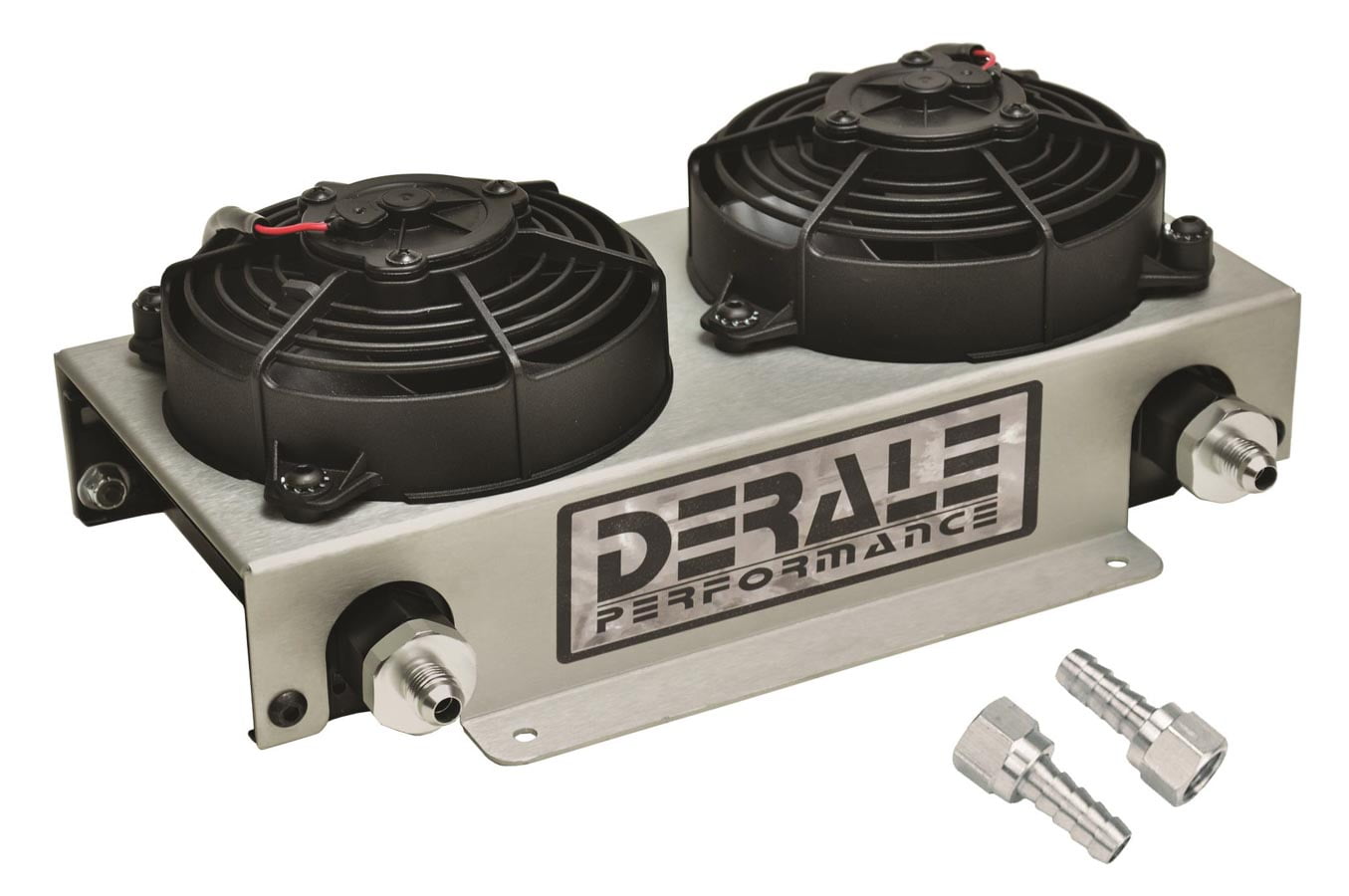

The four oil inlet/outlet ports fit a 1-1/16-inch, -12 O-ring fitting. It comes with a black and clear anodized finish, with a stainless mounting clamp. Obviously, there are lines and fittings to this system, but those are the three main ingredients.Ĭanton’s oil cooler thermostat is a durable piece machined from a 3-1/4-inch square 6061 T-6 aluminum extrusion, and measures six inches in height. This particular oil cooling setup (like most on the market) is composed of three basic parts: the “sandwich plate” that allows for the use of a thermostat or oil pressure sensor and the oil cooler unit. The oil cooler gives the oil a place to go to keep it in check in situations like this.” Utilizing an internal wax element, the thermostat reads the temperature of the incoming oil, and either diverts it to the cooler (if the oil is above 215 degrees it opens partially, and fully at 230) or sends it directly back to the oil filter and the engine to heat it up.īehuniak continues, “For a powerful street car, traffic is the worst thing for oil temperatures, because you’re not getting the airflow that you need to cool the motor.

The thermostat is the ‘brains’ behind this entire operation. This isn’t a good thing to have, particularly if you’re using an iron block, which doesn’t play well with water and rusts easily. You then have blow-by, which all engines are victims of to some degree, thus you’re going to have some level of moisture built up inside the crankcase.”Īs Speed explains, this vapor can be evacuated out of the crankcase fairly easily, but the issue is that when the engine only runs for a short amount of time and then cools down, the trapped vapor can condense, leaving moisture sitting in the crankcase. In the combustion process, every time there’s a cycle, water vapor is produced. But when your oil is below 212 degrees Fahrenheit - the boiling point of water - you’re building up moisture in your crankcase. Speed continues, “This is just a fact of life when it comes to engine oil, and the solution sounds easy - you just keep the oil cold. The most important rule of thumb is that, for every 18 degrees Fahrenheit that you increase your oil temperature, you cut the oil’s useful life in half. In the book of lubrication jargon, this is a simple way to describe what’s known as oxidation. “And that’s basically in terms of the oil’s ability to withstand temperature and not break down.”

“The most important rule of thumb is that, for every 10 degrees Celsius (or 18 degrees Fahrenheit) that you increase your oil temperature, you cut the oil’s useful life in half,” explains Speed. explained to us, this too, can have its damaging effects over the course of time. And as Driven Racing Oil’s Lake Speed Jr. And as you can imagine, driving in the perpetually warm climate of southern California or in the summer months elsewhere, in stop-and-go mode in town or on the freeway, the mercury on your oil temperature can rise fairly quickly - quicker than it has a chance to cool. These types of cars are built and designed with the race track and ultimate performance in mind, all while still maintaining driveability on the street. High horsepower, built engines are more and more commonplace in street cars these days, and our Project Biting The Bullitt 1965 Ford Mustang is a perfect example of such a vehicle. Oil Oxidation And The Need For Oil Coolers The need of effective oil cooling often comes into play with high horsepower, street-driven cars, where we not only want to achieve an optimum oil temperature, but keep it there under the rigors of the road.


 0 kommentar(er)
0 kommentar(er)
